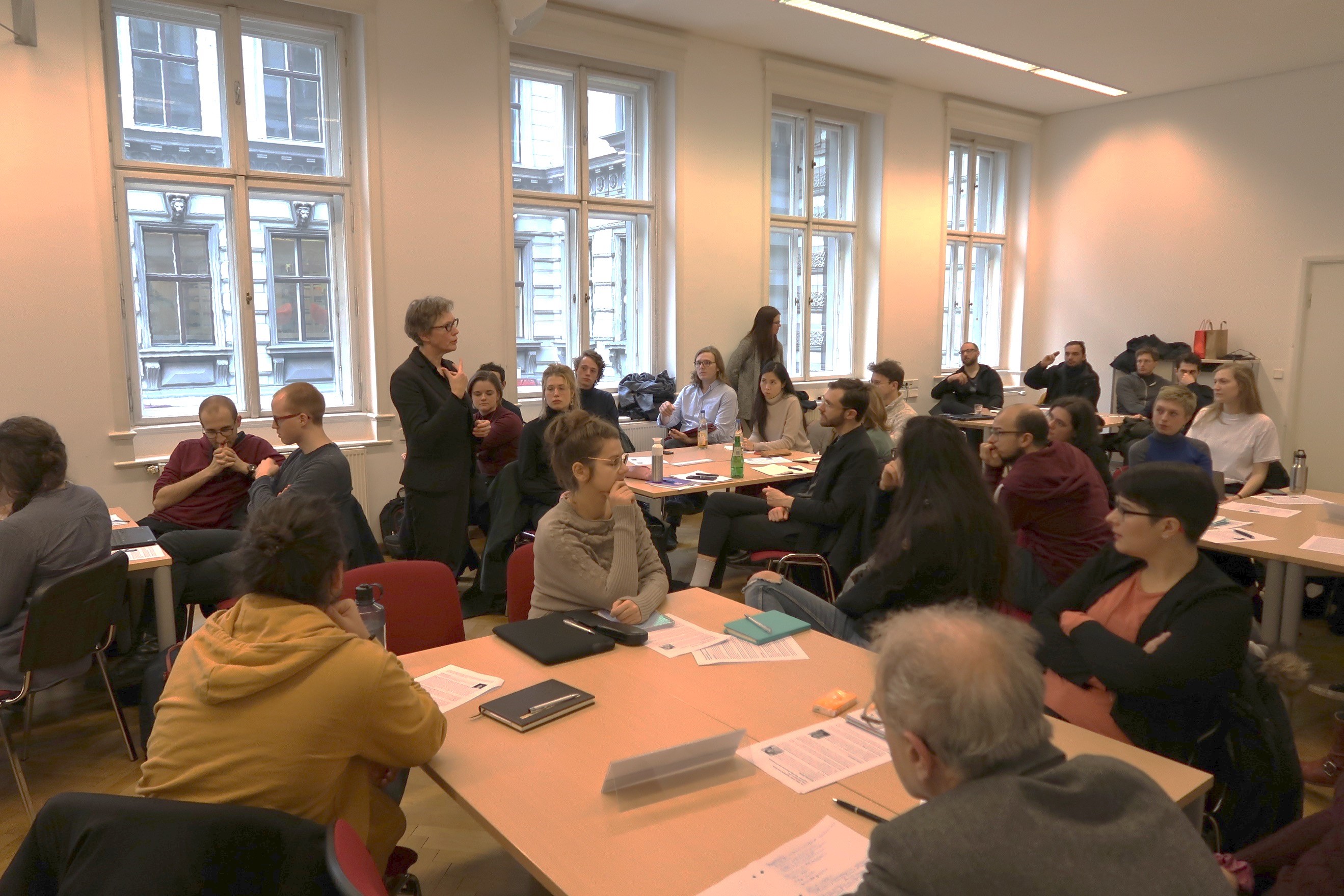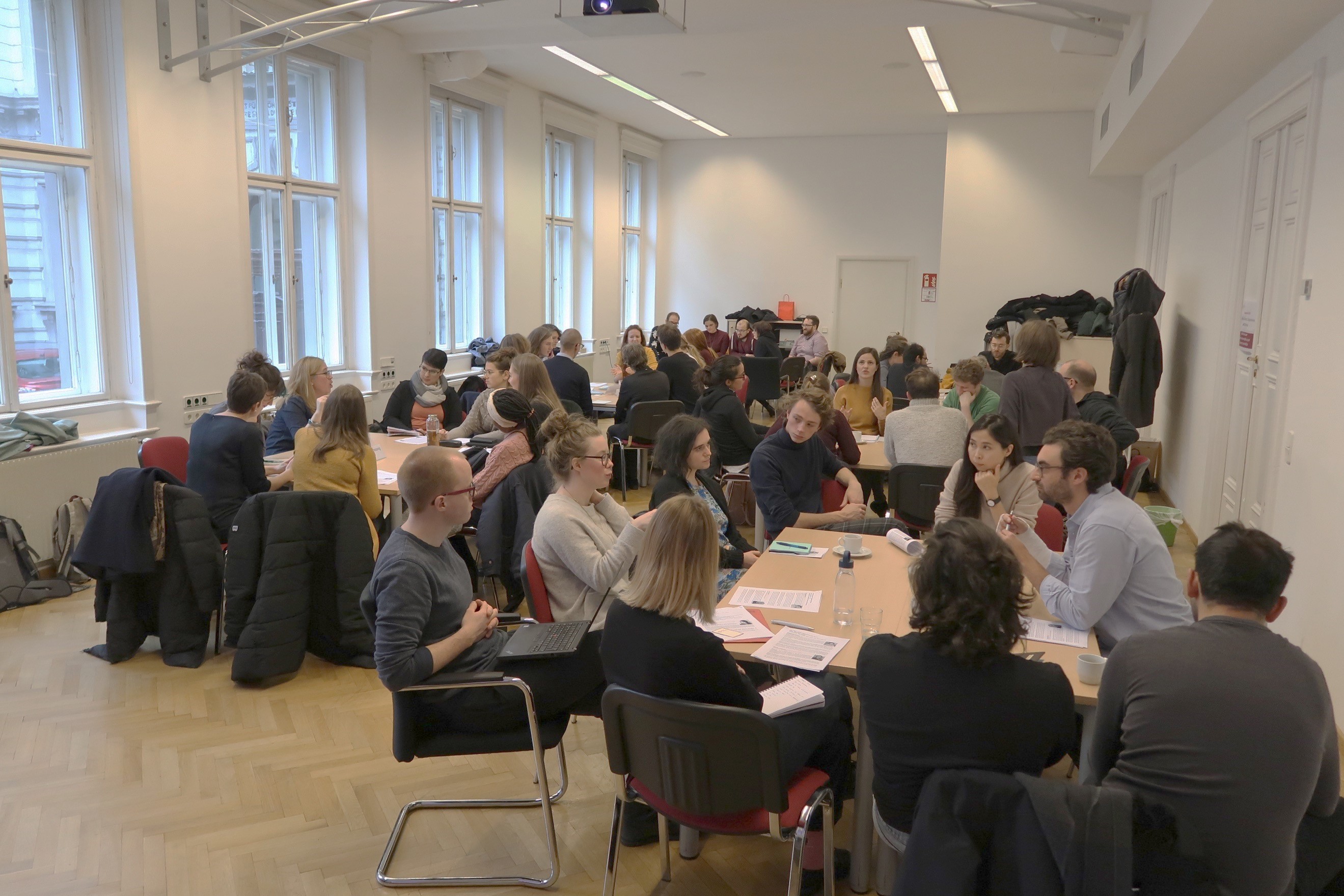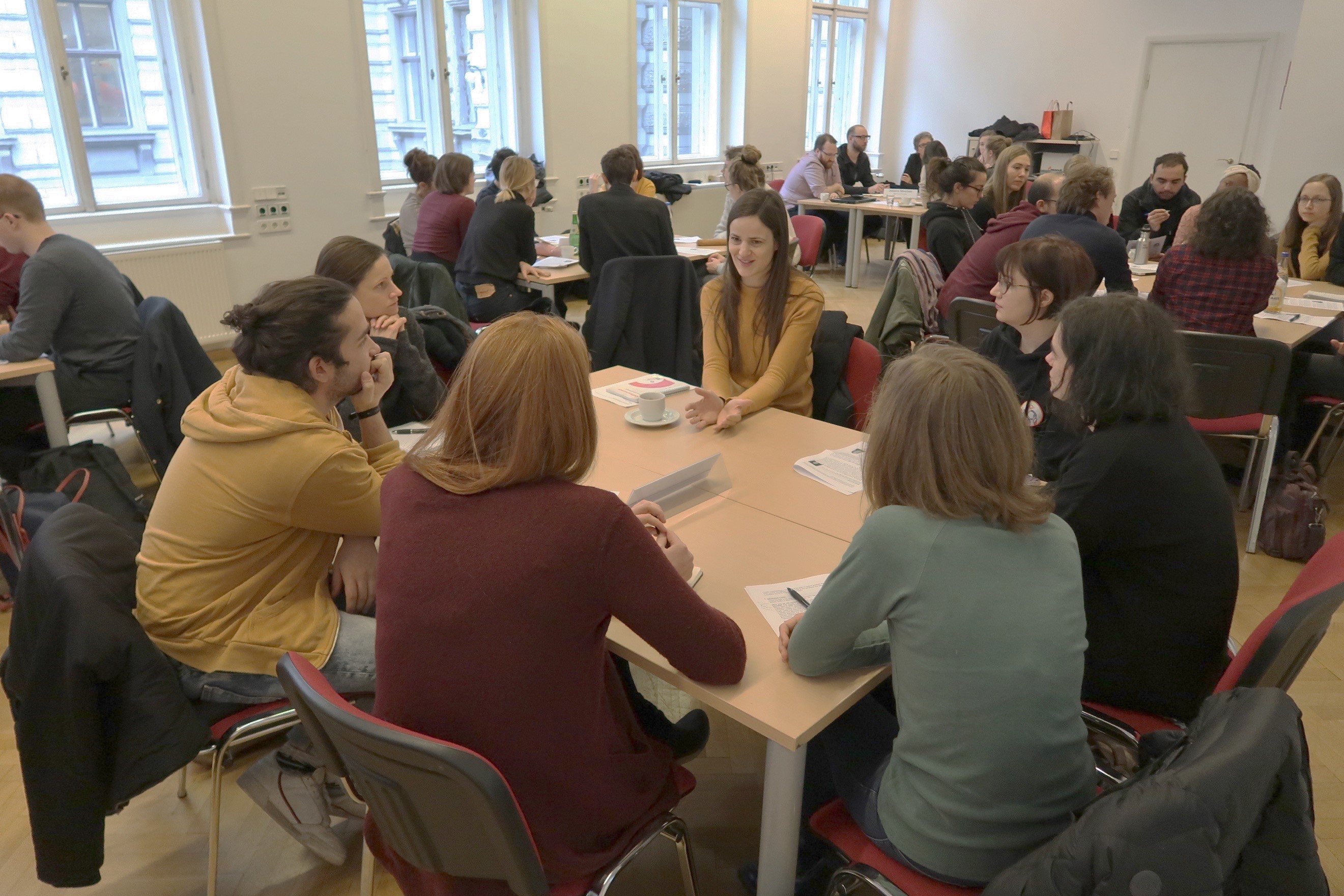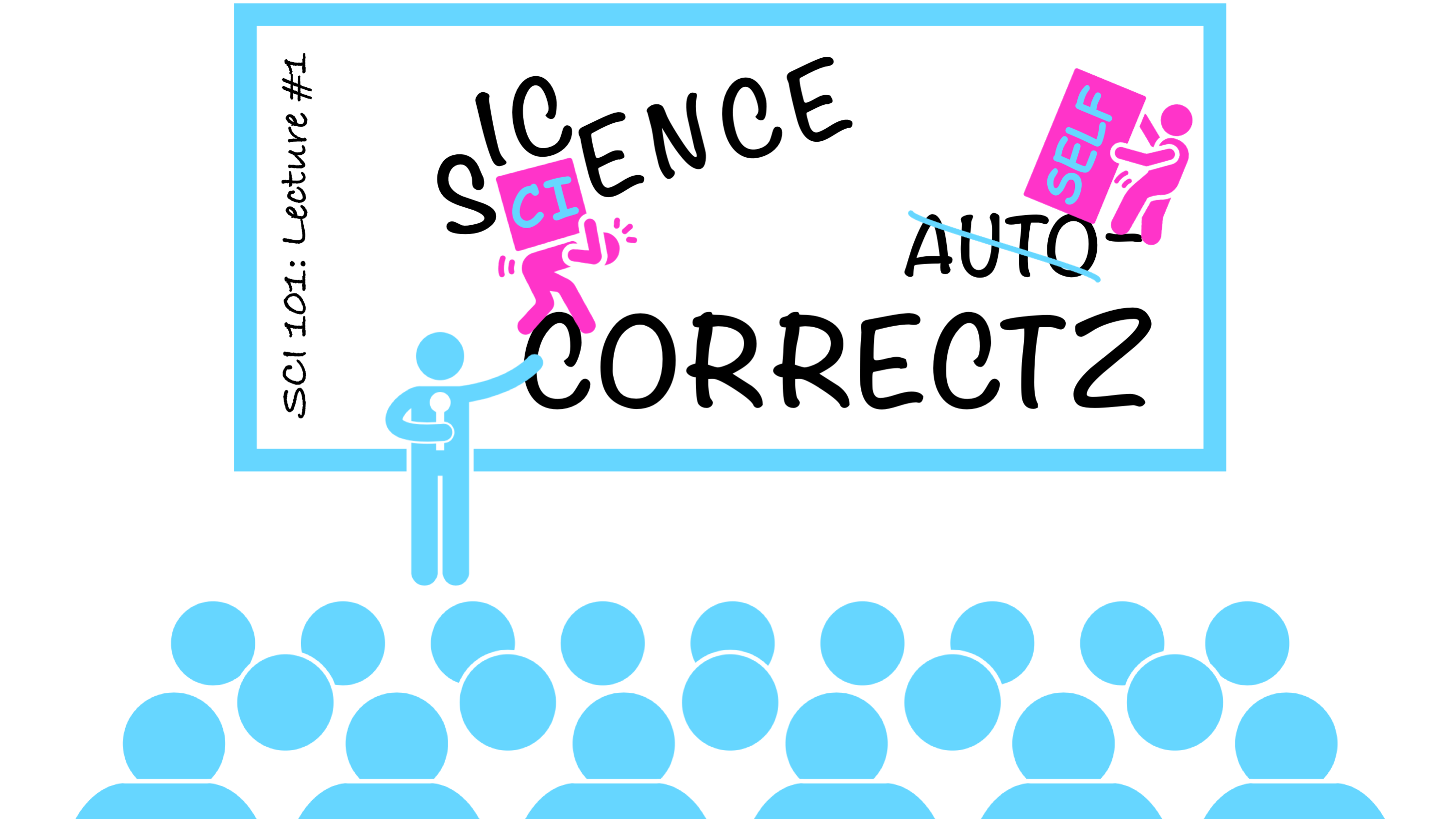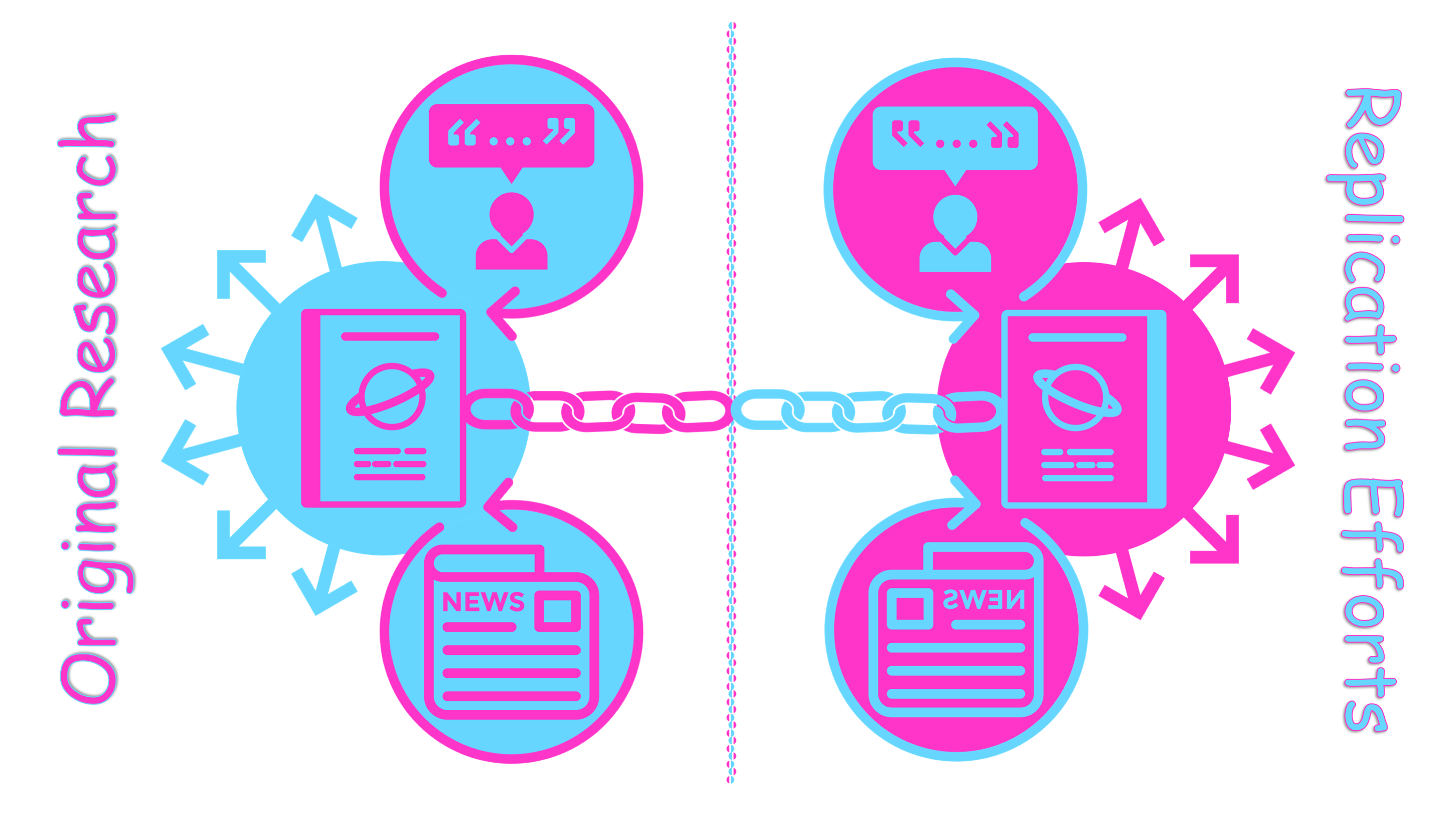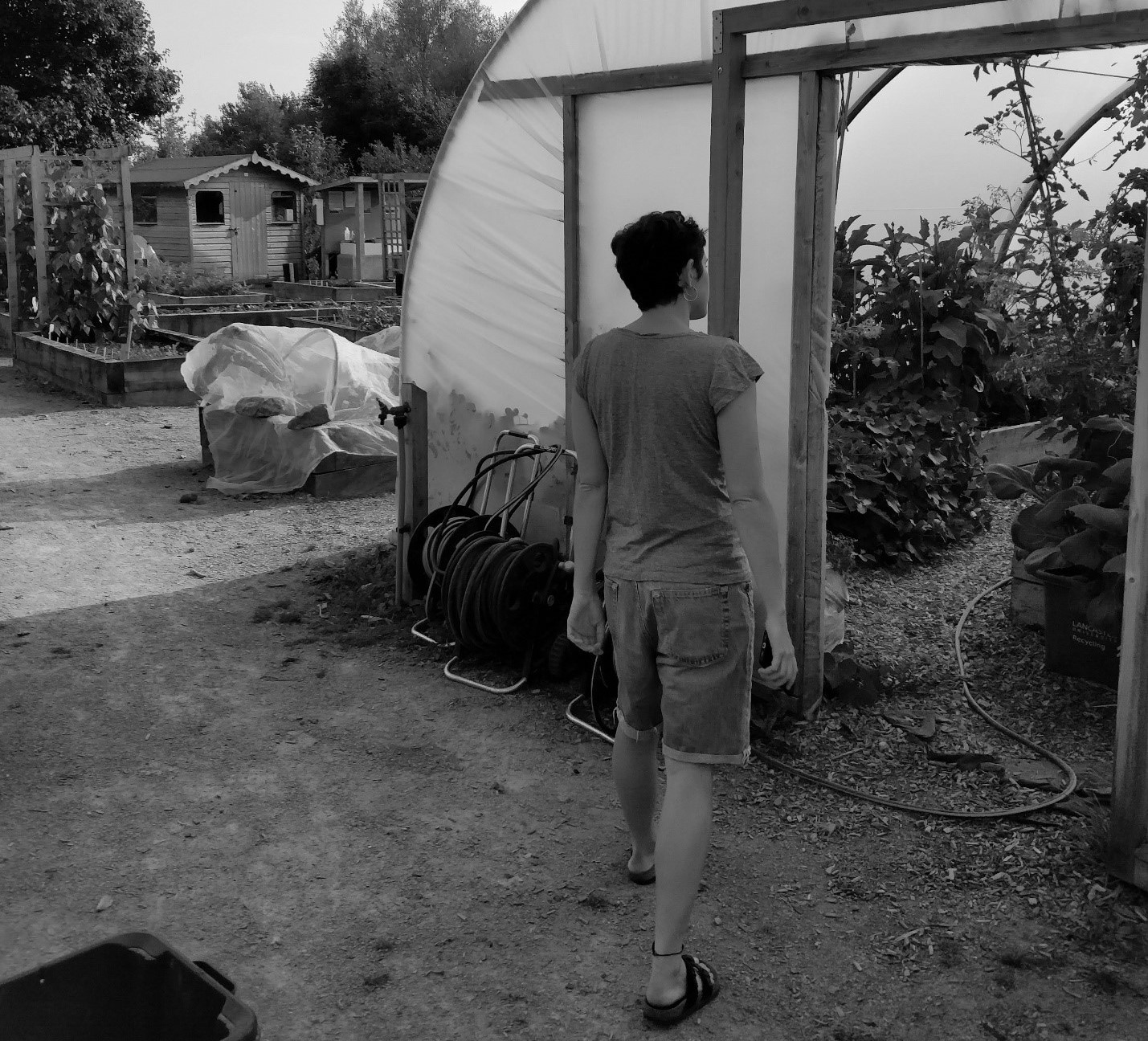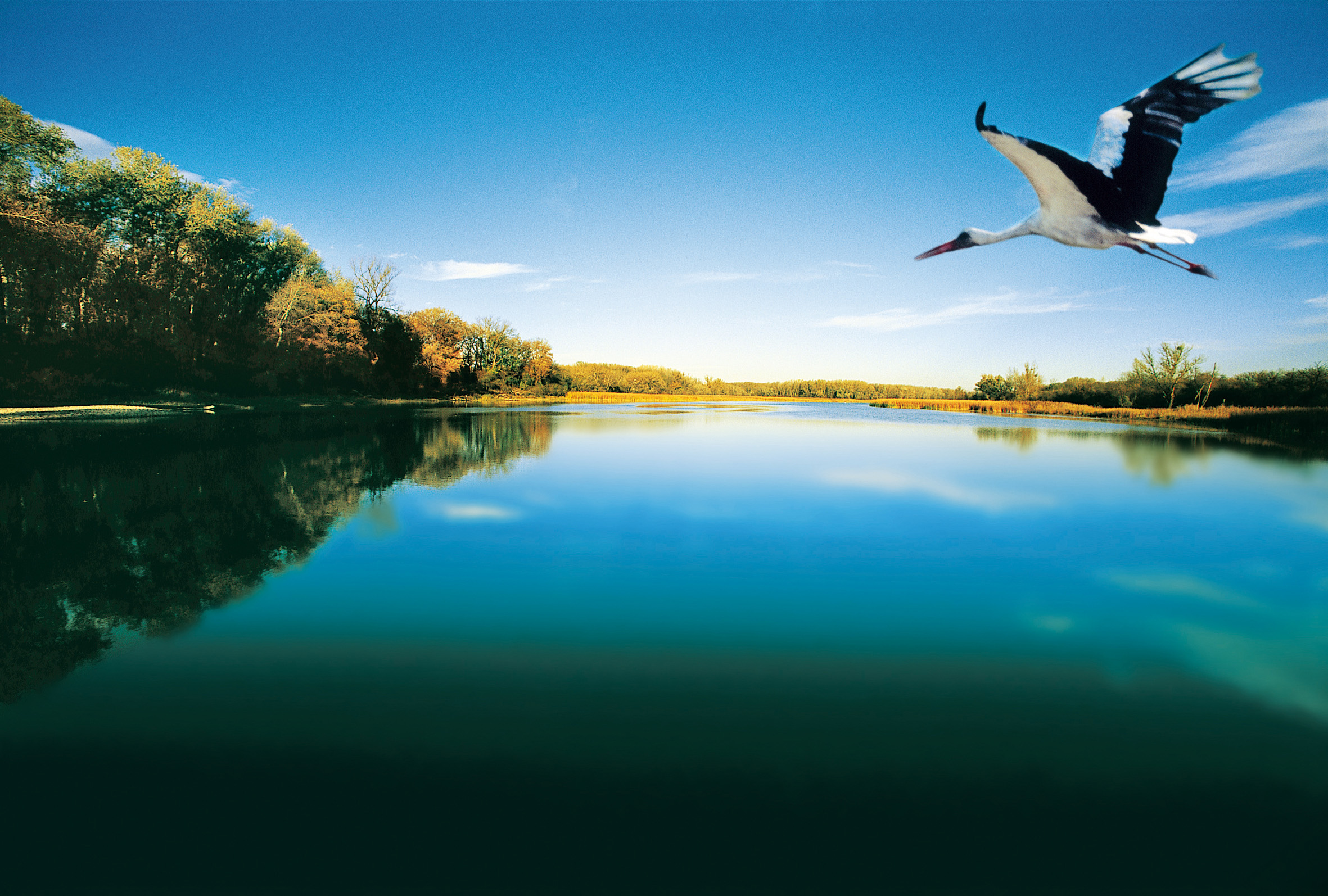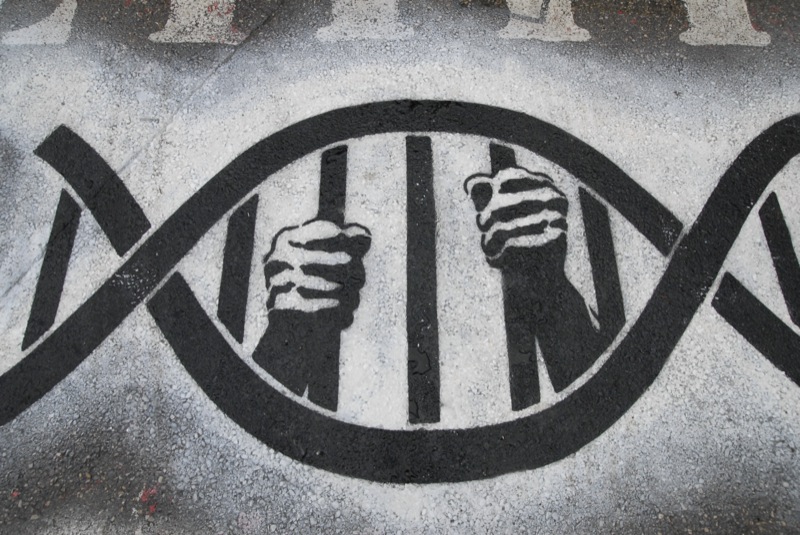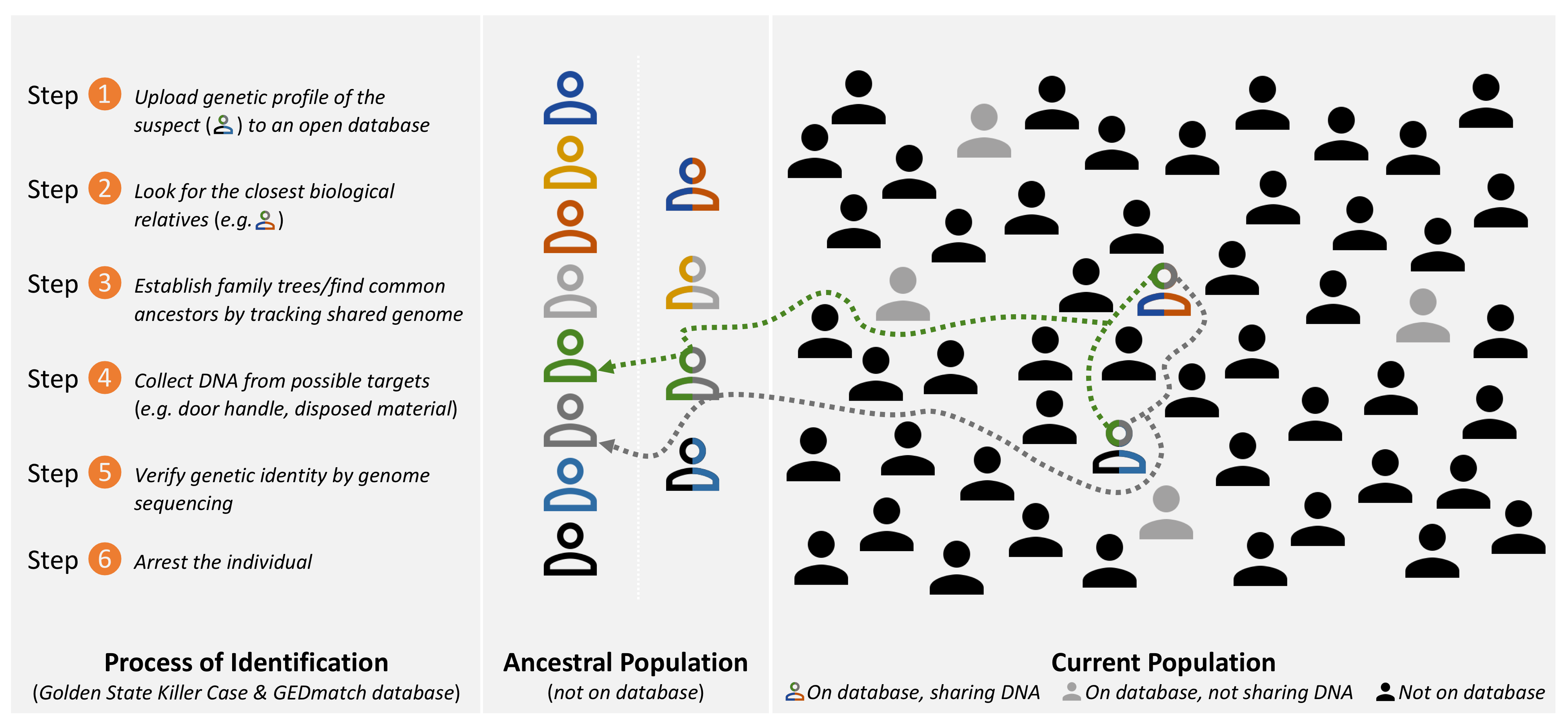By Marvin Alexander Heine
It is the 11th of October, 2019, in Vienna, Austria, and a little more than a dozen human beings, all young and more or less healthy, stand in front of a huge, dusty machine. Their heads are covered with colorful helmets, and, even though it is rather early in the morning, underneath those helmets one can spot faces that are wide awake and thirsty for knowledge. In their culture, these promising animals (1) seek to become scientists, they are hopeful, and eager to change the world for the better. They take notes, hold up their recorders, ask specific, appropriate questions and listen carefully to the answers given by an enthusiastic tour-guide. This machine they observe, is part of a bigger machine. It’s like one organ of a larger organism.
The guide explains carefully and passionately the purpose of those metal-structures, their history, their transformation and economic implementation. The hall they’re in is very large and every sound in here reverberates and echoes for quite a while. The south-wall is completely covered with windows and one can see the eery sunrays through the dusty air. This machine consists of tubes and turbines and connection pipes, like calcified veins (2). Those sophisticated creatures keep walking, secretly taking pictures, protocoling every single detail in their notebooks. Strange staircases lead the cohort into the heart of this nonhuman metal cyborg (3), which is a building in itself.
The sheer complexity of this structure is overwhelming, to the extend of being boring (4). All this seems like a metaphor, a little model which represents society, or a nervous system. Yellow pipes for gas, blue for oil. Or was it the other way around? Our tour-guide tries to convince us, that we are confronted with an active energy plant, – a very modern one even, one that supplies 730.000 households with heat and electricity. Every now and then someone with a blue collar rides by on an old, loud bike, – like an extra, a bystander. This is, supposedly, an incineration plant, which works almost entirely with burning waste, – and therefore, – our guide incessantly repeats it, this plant is on the forefront of environmentally friendly energy production. A few decades earlier, he continues, there were dangerous symptoms of pollution and destruction, forest dying, sicknesses, etc. But improvements, using waste as energy, renouncing coal, changed a lot. If the politics would give more subsidies, if industries would improve their vision and if consumers would change their behavior, incineration plants like this one could be the future.
The students skeptically look around. There is still this scent of an old library or a museum in the air. The planet’s human population has doubled in the past 50 years. In that same period, the size of the global economy has quadrupled, and global trade has grown tenfold. Humans have significantly altered seventy-five per cent of the land. Over 85 per cent of wetlands have been lost. Approximately half the world’s coral cover is gone. In the past ten years alone, at least seventy-five million acres of forest have been destroyed. More than 7,000 underground methane gas bubbles are about to explode in the Arctic. We’ve emitted as much atmospheric carbon in the past thirty years as we did in the previous two centuries of industrialization and massive crop failures, apocalyptic fires, imploding economies, epic floodings are reported on a daily basis, forcing hundreds of millions of people to flee regions made uninhabitable by extreme heat or permanent drought (5).

And almost everyone still believes, that „if we all unite“ then we can still prevent the environmental apocalypse. Especially when we change our own „consumer behavior“. Well, why not? It is a first step, and if it’s true, that this energy plant is not just a museumpiece, than it is a manifested symbol of an alternative approach for natural and artificial coexistence. And to be honest, this species had millions of years to develop a wheel, and now, confronted with the destruction they caused, like ignorant children that didn’t know better, they have only 30-40 years to change EVERYTHING, or being forced to adapt to a new world. So energy plants like these, even though they might not actually prevent an immanent catastrophe, are, considering the circumstance, surprisingly progressive and inspiring (6). The tour has ended. The students swarm out, in every direction, towards busses, trams, machines to live in. Still in thought I walk towards a close-by train-station.
I don’t have to ease my pace, sidestep or use my limbs. This wall of glass welcomes me, it opens up and leads my way. As if by magic, and politeness, a friendly mechanic instinct detected my approach and cautiously reacts by opening up a door. The temperature changes, the air is dry and warm and filled with distant scents: Something sweet, like popcorn, – oil and meat. I smell kerosine, metal and dust. Transpiration of skin, restlessness and anxiety inexorably evaporates from a socio-technical body in motion. Sluggish machines, like lethargic little elephants, reluctantly suck in the wrappings of fastfood, flyers and printed advertisements. Showcases, seductions, a shiny flicker of light. I rest and observe and let myself be immersed by a car commercial. Those happy childreneyes, their motionless hair in the wind, /freedom/, a promised adventure. Next to it, barely dressed in dark-red lingerie, a female, whispering the colors of love, Baisser Volé: Cartier.
After a while, their unvoiced expressions change. They urge me to move on, to go to work, not to disrupt the flow, because I can’t afford them, only dream of them. A few steps forward and I get swept away by a current of bodies. Click-clacking shoes, fragmented announcements, distorted pop-music, leather, denim, wool: an intricate sound of movement, of routine, of busy bees buzzing around their hives. With a generic movement I validate the ticket and turn around (7).

Relentless, seamless streams of humans arise from, – or disappear in the underground’s gullet. Standing on the right side of the escalator, I hold on to the handrail and surrender, like everyone else around me, to the raw and efficient trans-human metabolism of urban public transport systems. As I descend, the appearance of things changes, their references to social reality, their cultural framework. White Noise. Sterile but warm. I cannot hear the cars anymore, the supermarkets, the sing-song from the coffeeshop. The rhythms that lay hidden above, now impose themselves upon my senses. Waiting. To dislocate. Departure in four minutes. Where am I? In-between. Only in those quiet minutes while waiting for a train I can clearly see the city (8).
I sense cyclical repetition, infinite itineraries, discontinuous lines of flight, a kaleidoscopic urban world. Each station linked into a greater uniform identity. Even down here, in this submerged and hidden non-space of the urban, where everyone is standing still, – I sense a thousand and one movements, bacterias, human hearts and disconnections. The platform releases subliminal vibrations, slowly intensifying, – and then I smell and feel the invisible wind being pushed through the tunnel. Joining the pressure in my ears the noise of steel and heaviness grows closer and stronger, instinctively alerting my body, – and then this monster of a machine, a cyborg city in itself, decelerates right before my eyes. An acoustical trauma for everyone who has never heard a subway approaching. I see myself reflected by the moving train, – a hypnotizing stop motion sequence, – until this mindless metal worm finally stops and yawns and coughs and vomits out passengers. After a mechanic choreography of giving way and entering and keeping distance and an impersonal face, I push away a populist tabloid paper, sit down and close my eyes.
A short moment of quietude followed by a signal as sharp as knife. I see red flashes of light through my closed eyelids, hear wheels forcefully grasp onto the rails and abruptly clickshutting doors. Zwish, Klonk. One hears and sees those trains start up, pull forward, but how? And Why? Those trains and the generatively multiplying networks they are part of are veins rooted beneath us, secretive symptoms of clandestine structures, constantly on the verge of breakdown. No one is really in charge (9). They are accepted as truly facts as rivers and lakes are (10). An ungraspable whole. And at the center is me, listening with my body, blindfolded, with my senses in evenly suspended attention. I hear de-centered recurrent patterns, relations of immediacy, the rippling and rising of voices. A concatenation of rhythms, acousmatic ghosts (11) of presences, time both broken and accentuated. Smells that overlap, irritate and vanish, – someone’s breakfast, someone else’s dinner. Everyone on this train is living out an individual itinerary, going to work, getting home, to the library, the bar. These itineraries, subjectively lived, endow this train with reality. And yet, everyone is conforming according to a certain social code, in the comfort of collective morality (12). The moving subway oscillates as a shadow, a mirror of the terrestrial, reflecting back on those spaces as they are charged by cultural and ideological forces (13)… (This was part one of a two part essay. Part two will be published on this blog in the following week.)
Marvin Alexander Heine is a master student at the department of sociology at the University of Vienna. He is deeply interested in the senses, their phenomenology, mediations, and politics. Currently he is writing and filming his master thesis about the influence of the urban acoustics on processes of socialization.
Notes
(1) Derrida, in his lecture „the animal that therefore I am“ refers to Nietzsche when he says „man is a promising animal (…) an animal that is permitted to make promises.“ (Derrida 2006: p.3)
(2) Kaika M., for example, states: „Cities are dense networks of interwoven socio-spatial processes that are simultaneously human, material, natural, discursive, cultural, and organic (Kaika 2005: p. 23).
(3) Lancionne and McFarlance, when discussing key contributions of the urban political ecology (UPE) state, based on Haraway’s cyborgs and Latour’s hybrids„that the urban cannot be separated from the biophysical, and that the city is a key place for the reconfiguration of socio-natures“ (Lancionne & McFarlane 2016: p. 4.)
(4) Star begins her article on the ethnography of Infrastructure by stating, that many „aspects of Infrastructure are unexciting“, and that the scientists should explore the „embedded strangeness, a second order one, that of the forgotten, the background, the frozen in place“. (Star 1999: p. 377ff)
(5) To find information on the acuteness off our environmental’s catastrophe one could read Wallace-Wells article „When Will Climate Change Make the Earth Too Hot For Humans?“ (Wallace-Wells 2017), or Jonathan Franzen’s „What If We Stopped Pretending?“ (Franzen 2019).
(6) Hommels discusses the problem of urban obduracy, and why changing embedded urban structures proves so difficult: „Once a technological frame work is established, it will guide the ways of thinking and interacting between actors.“ (Hommels 2018: p. 211)
(7) “In front of the bank automat I had to act as a generic individual endowed only with an individual pin code; pressed against the barrier on the pavement I was a mechanical force weighing against another mechanical force; in front of the traffic light I became a reader of signs, capable of understanding a prohibition;[…]” (Latour and Hermant 1998, plan 33).
(8) Sadjic argues, that „this new species of city is not an accretion of streets and squares that can be comprehended by the pedestrian, but instead manifests its shape from the air, the car, or the mass transit railway.“ (Sudjik 1992: p.297)
(9) One of the nine properties of infrastructures, according to Star is, that infrastructure „is fixed in modular increments, not all at once or globally“ (Star 1999: p. 382), and that this kind of de-centralization doesn’t allow for one determining control-system.
(10) Cronon, referring to the invention of railroad systems in North America, states that trains seem „less as an artificial invention than as a force of nature.“ (Cronon 1991: p. 73)
(11) „The acousmatic is a sound heard whose origin we do not see.“ (Labelle 2010: p. 14)
(12)„Transgressed or not, the law of the metro inscribes the individual itinerary into the comfort of collective morality, and in that way it is exemplary of what might be called the ritual paradox: it is always lived individually and subjectively; only individual itineraries give it a reality, and yet it is eminently social, the same for everyone, conferring on each person this minimum of collective identity through which a community is defined.“ (Marc Augé 2002: p. 30)
(13) This reminds of Foucault’s definition of heterotopia, that has „the curious property of being connected to all the other emplacements, but in such a way that they suspend, neutralize, or reverse the set of relations that are designated, reflected, or represented by them.“ (Foucault 1998: p.178)
Bibliography
Augé, M. (2002). In the Metro. Minneapolis: University of Minnesota Press.
Cronon, W. (1991). Preface & Rails and Water. In Nature’s Metropolis: Chicago and the Great West (pp. xiii-xxiii & 55-93). New York: W.W. Norton.
Derrida, J. (2006). The Animal That Therefore I am. New York: Fordham University Press.
Foucault, M. (1998). Essential Works of Foucault 1954–1984, Volume 2, Aesthetics. London: Penguin Books.
Franzen, J. (2019). What If We Stopped Pretending? Retrieved from: https://www.newyorker.com/culture/cultural-comment/what-if-we-stopped-pretending
Hommels, A. (2018). Re-Assembling a City: Applying SCOT to Post-Disaster Urban Change. In M. Kurath et al. (Eds.) Relational Planning: Tracing Artefacts, Agency and Practices (pp. 205-228). London: Routledge.
Kaika, M. (2005). Preface: Visions of Modernization & The Urbanization of Nature. In City of Flows: Modernity, Nature, and the City (pp. 3-26). New York, NY: Routledge.
LaBelle, B. (2010). Acoustic Territories. New York: Continuum.
Lancione, M. & McFarlane, C. (2016). Infrastructural becoming: sanitation, cosmopolitics and the (un)making of urban life at the margins. In A. Blok & I. Farias (Eds.) Urban Cosmopolitics (pp. 45-62). London: Routledge
Latour, B., & Hermant, E. (1998). Paris: Invisible City. Paris: La Découverte. (Virtual Book: [Sequences: 1 Traversing + 4 Allowing] http://www.bruno–latour.fr/virtual/ paris/english/frames.html).
Star, S. L. (1999). The Ethnography of Infrastructure. American Behavioral Scientist, 43(3),377–391.
Sudjik, D. (1992). The 100 mile city. Harcourt Brace, San Diego.
Wallace-Wells, D. (2017) The Uninhabitable Earth. http://nymag.com/intelligencer/2017/07/climate-change-earth-too-hot-for-humans.html
